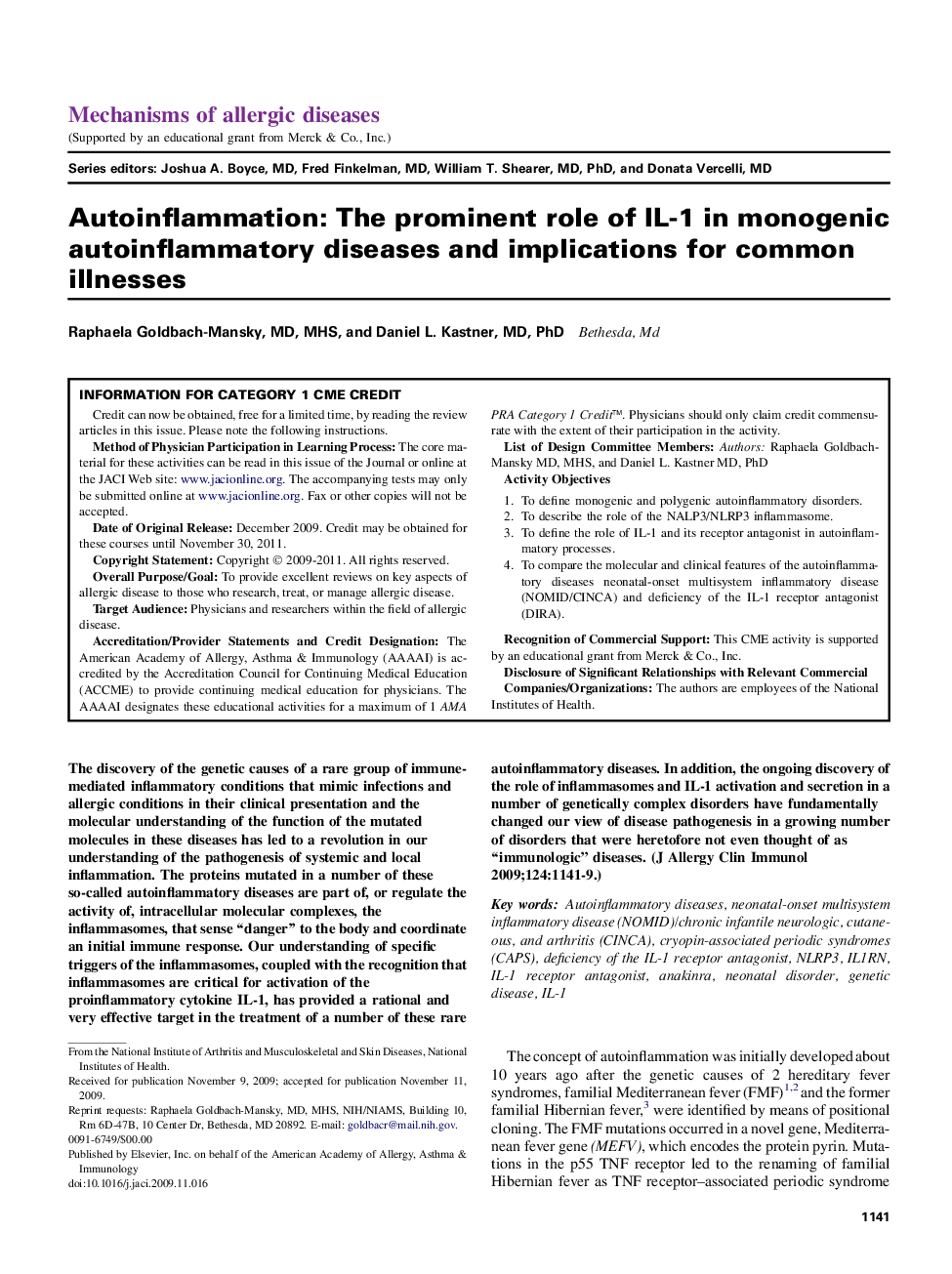| کد مقاله | کد نشریه | سال انتشار | مقاله انگلیسی | نسخه تمام متن |
|---|---|---|---|---|
| 3201053 | 1201948 | 2009 | 9 صفحه PDF | دانلود رایگان |

The discovery of the genetic causes of a rare group of immune-mediated inflammatory conditions that mimic infections and allergic conditions in their clinical presentation and the molecular understanding of the function of the mutated molecules in these diseases has led to a revolution in our understanding of the pathogenesis of systemic and local inflammation. The proteins mutated in a number of these so-called autoinflammatory diseases are part of, or regulate the activity of, intracellular molecular complexes, the inflammasomes, that sense “danger” to the body and coordinate an initial immune response. Our understanding of specific triggers of the inflammasomes, coupled with the recognition that inflammasomes are critical for activation of the proinflammatory cytokine IL-1, has provided a rational and very effective target in the treatment of a number of these rare autoinflammatory diseases. In addition, the ongoing discovery of the role of inflammasomes and IL-1 activation and secretion in a number of genetically complex disorders have fundamentally changed our view of disease pathogenesis in a growing number of disorders that were heretofore not even thought of as “immunologic” diseases.
Journal: Journal of Allergy and Clinical Immunology - Volume 124, Issue 6, December 2009, Pages 1141–1149